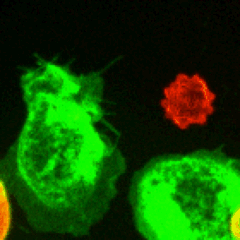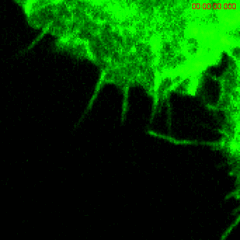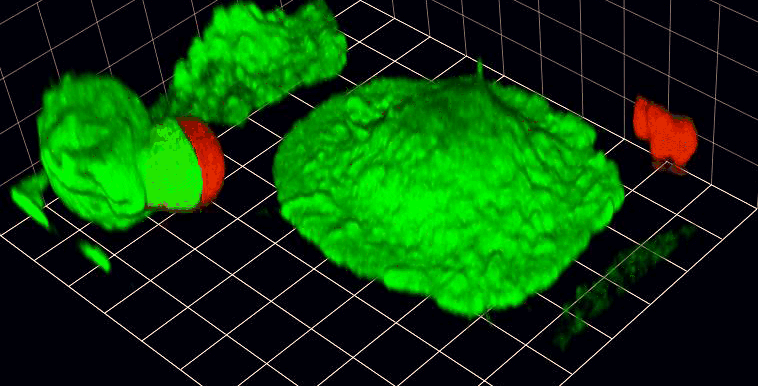Mouse macrophages motility and phagocytosis group



Research
Macrophages are the major components of the innate immune system found outside of blood vessels. These highly versatile immune cells, found in every body tissue, are specialized in clearing pathogens, as well as damaged or aged host cells. We are interested in understanding how macrophages (1) move and navigate along chemoattractant gradients and (2) capture and ingest particles, such as opsonized red blood cells, bacteria or yeast. As a model system and experimental approach, we use resident peritoneal macrophages, isolated from wild-type or transgenic mice, combined with time-lapse microscopy.
RECENT AND CURRENT WORK
We are using knockout mouse models to explore the critical signal wiring required for macrophages to migrate along concentration gradients of complement C5a, a major endogenous chemoattractant. In parallel, we are developing assays and performing time-lapse spinning disk confocal microscopy to visualize how macrophages ingest particles via specific phagocytosis receptors, e.g. Fcγ receptors or complement receptors. In addition, using various knockout mouse models, we have investigated the roles of the unconventional myosins Myo10 (myosin X) and Myo18a (myosin XVIIIA) in macrophages, as well as, more broadly, in mouse development.
